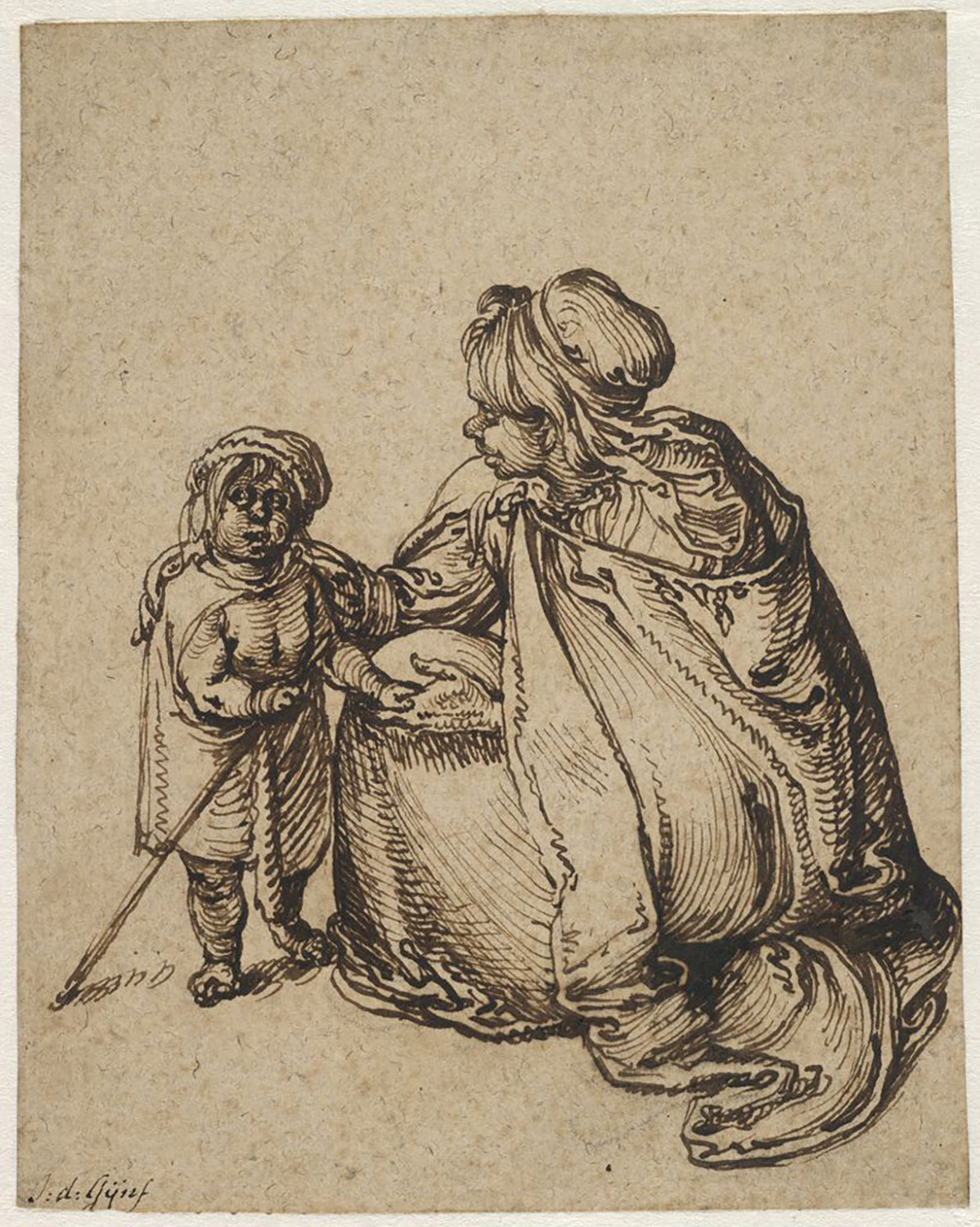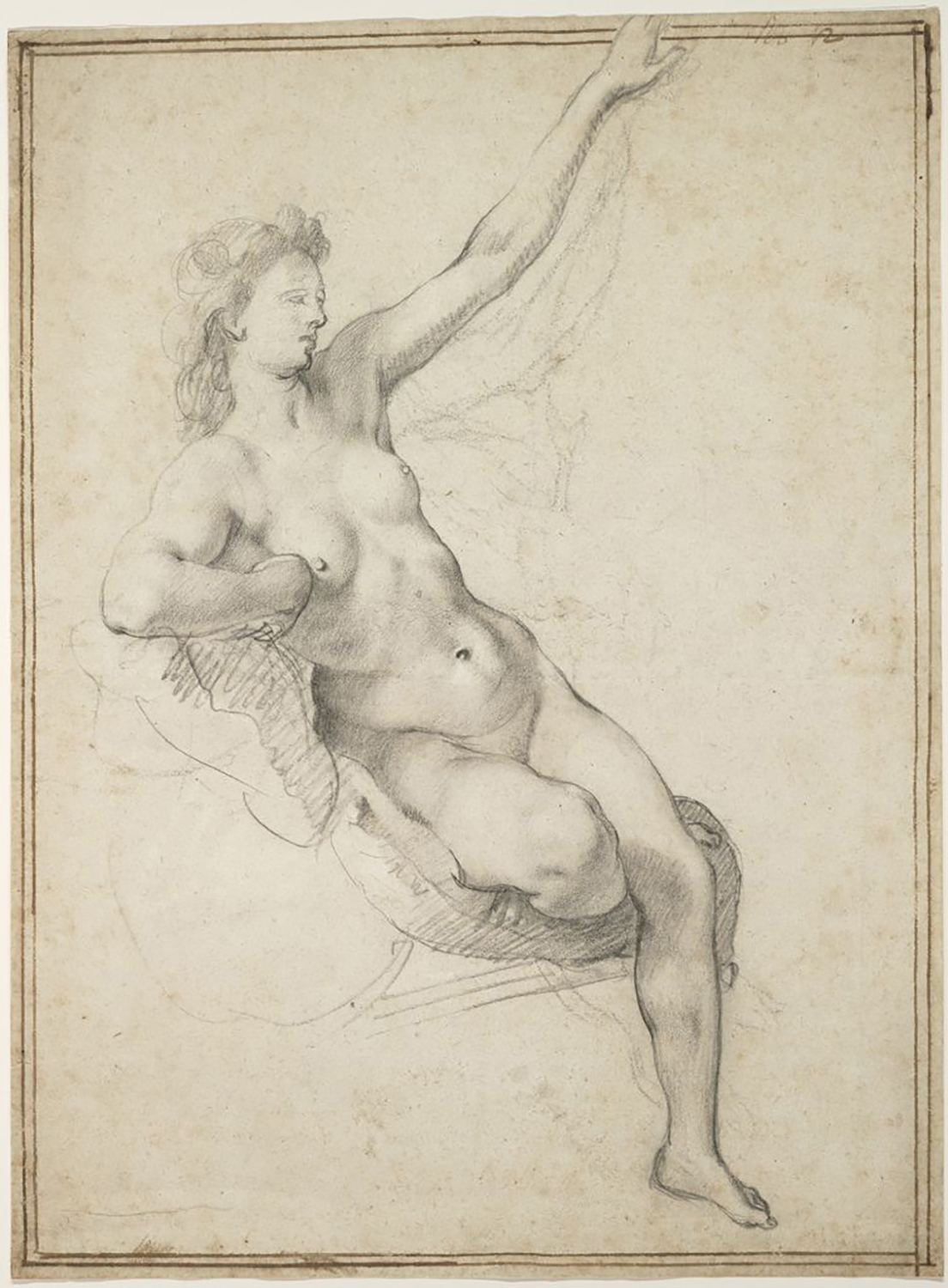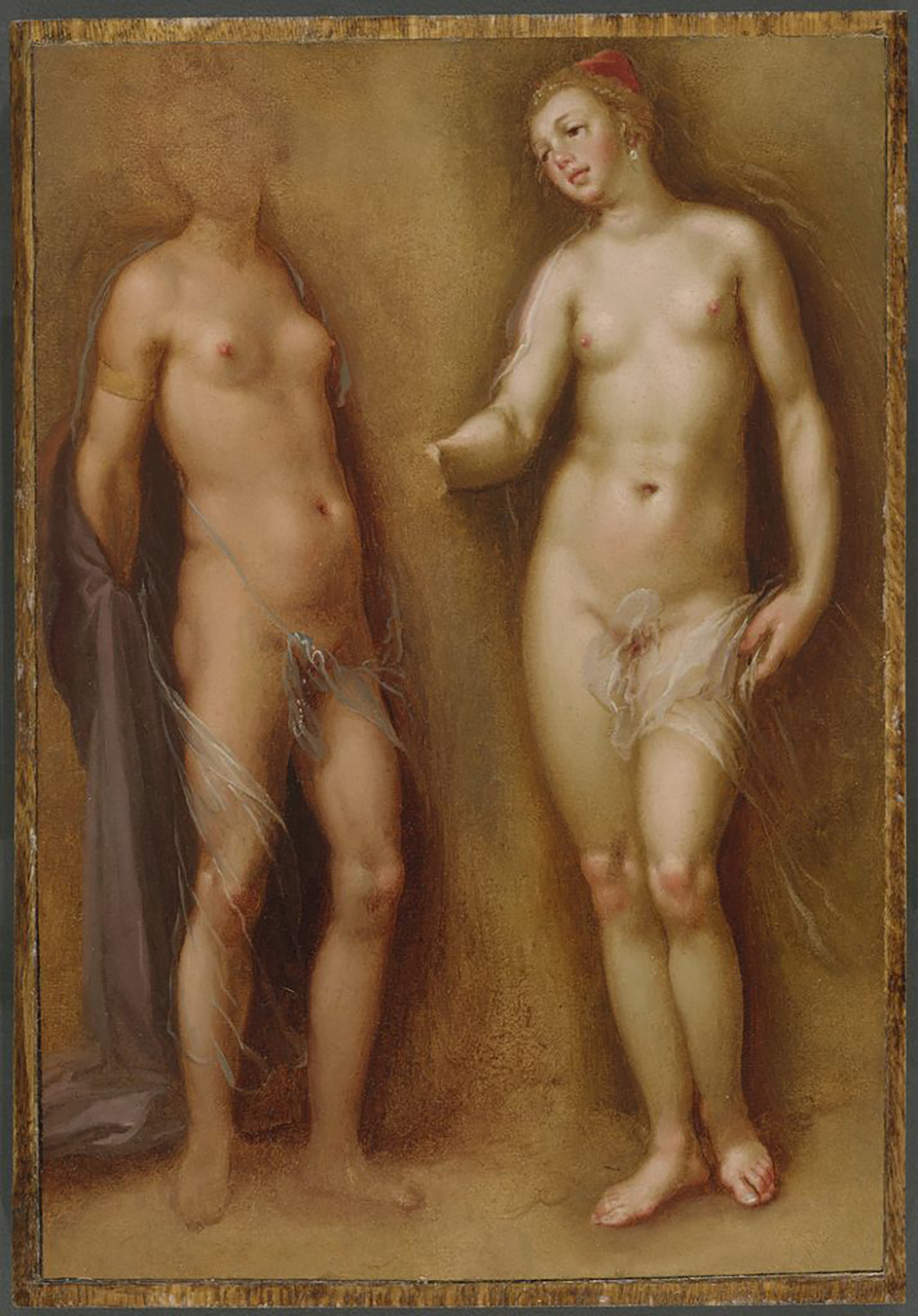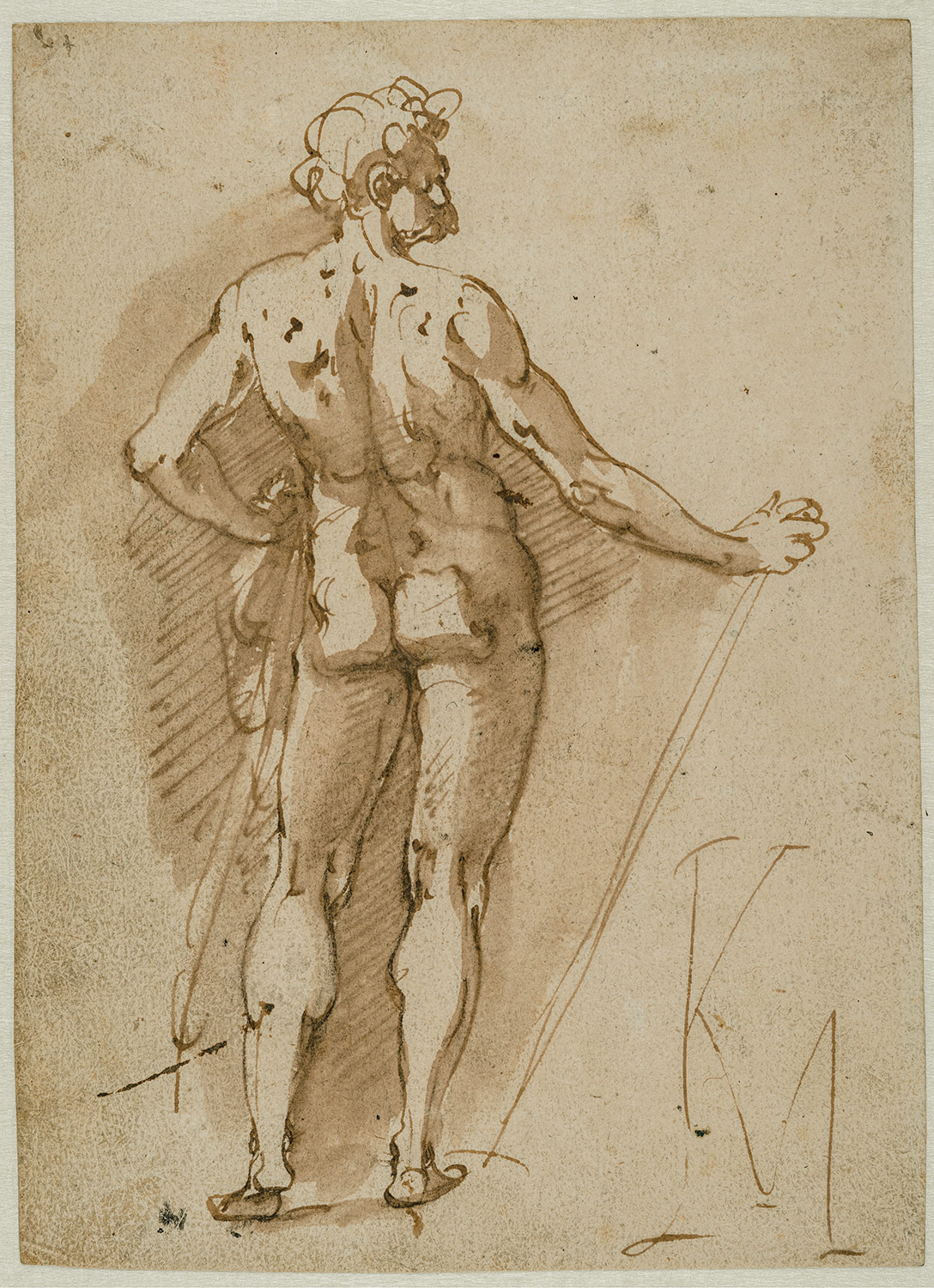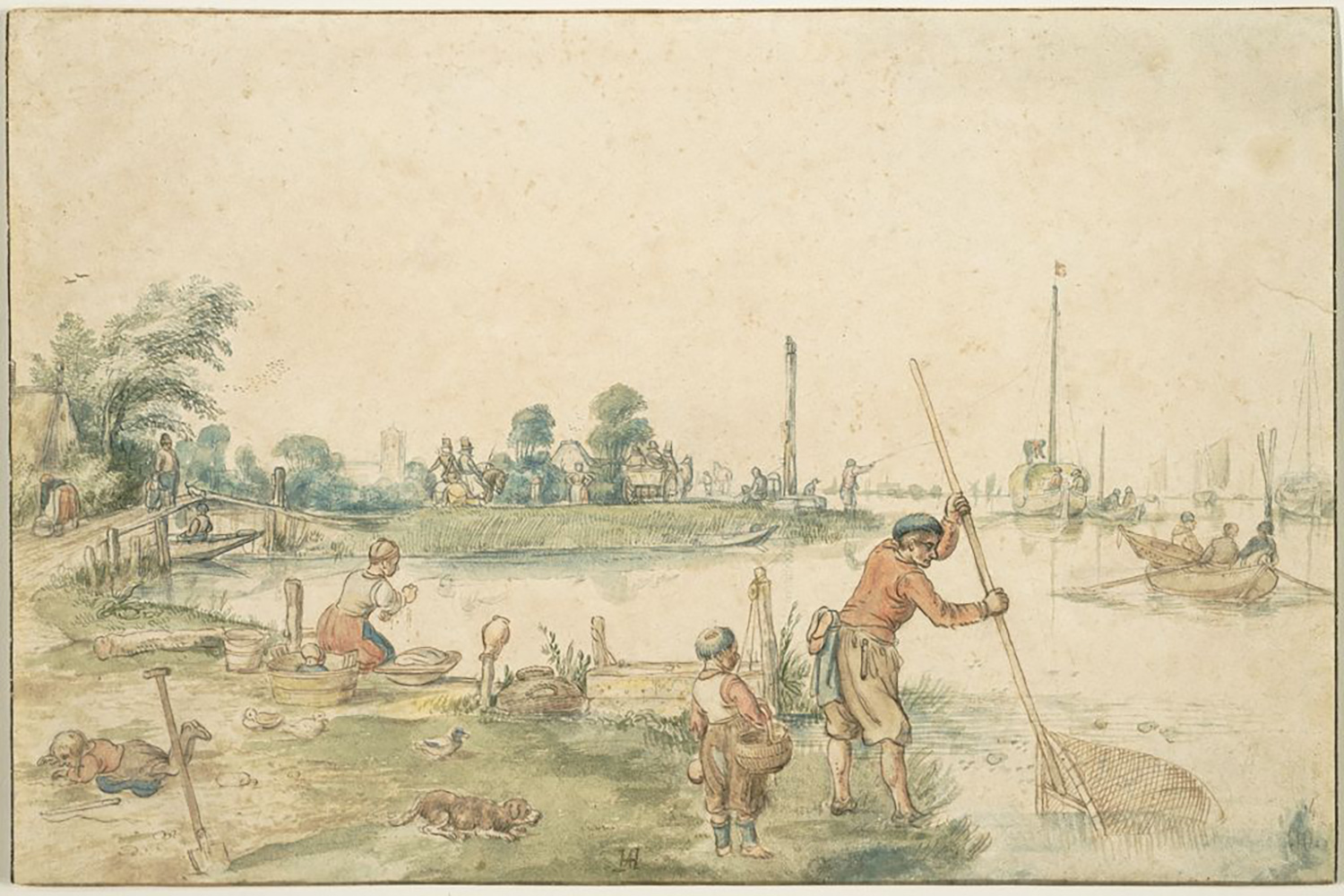The Dutch Golden Age reached its apex during the mid-17th century with the rise of such masters as Rembrandt and Vermeer. But during the first decades of this era—the early Golden Age, from roughly 1590 until 1630—much of the groundwork for blockbuster artists was laid by less familiar, yet no less talented draftsmen.
A Burst of Creativity
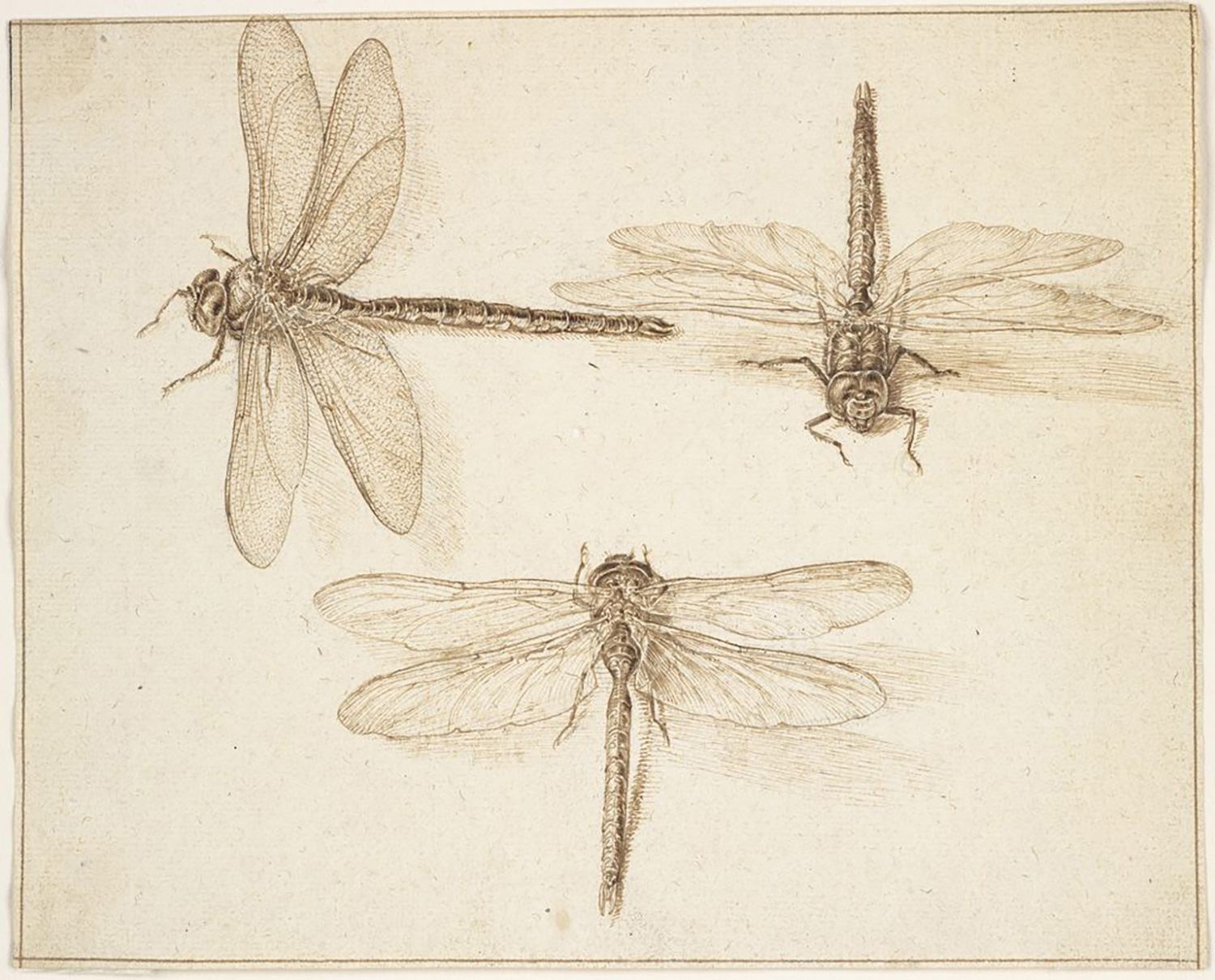
The early Golden Age was a period of extraordinary change and progress. In 1581, the newly formed Dutch Republic declared independence from Habsburg Spain, ushering in a period of nation-building, religious tolerance, increasing economic and military might, and a growing middle class—all of which set the stage for an extremely vibrant artistic scene to flourish.
“Many of the characteristics we now consider to be definitive features of Dutch art—elements like landscapes showing canals, forests, and rustic cottages, as well as genre scenes featuring depictions of peasant life or members of the upper classes—emerged at this moment,” said Austėja Mackelaitė, the Stanley H. Durwood Foundation Curatorial Fellow at the Harvard Art Museums. With guidance from Edouard Kopp, the Maida and George Abrams Curator of Drawings, and the help of Susan Anderson, a curatorial research associate for the Harvard Art Museums and curator of the Maida and George Abrams Collection, Mackelaitė curated the installation The Art of Drawing in the Early Dutch Golden Age, 1590–1630: Selected Works from the Abrams Collection focused on this unique period.
The installation includes 31 drawings from the esteemed collection of Maida and George Abrams (Harvard A.B. ’54, LL.B. ’57). The couple’s Dutch art holdings span about 150 years, but the early Golden Age was of particular interest to George Abrams.
“My wife and I built a very strong collection in this area because this period, with its burst of creativity, fascinated us,” Abrams said. “It was a breakthrough moment in art history.”
Masterful Draftsmanship
The installation is divided into four thematic sections, highlighting masterful pen-and-ink drawing, the emergence of high and low genre, the Dutch take on mannerism and its interpretations of the body, and landscape.
A number of works by Jacques de Gheyn II, a favorite of the Abrams, are in the first section, about the “artful pen” and works that display incredible technical prowess. De Gheyn, a student of Hendrick Goltzius, was a virtuosic draftsman.
For instance, in one of his drawings made from life, A Roma Woman with a Child (c. 1604), De Gheyn used a combination of bold and gentle lines to represent the subjects. “The mother’s hair is tied together simply, but the way De Gheyn treats it with his pen, it almost seems as if it’s a very elaborate hairstyle,” Mackelaitė said. “Overall in this drawing, there’s a kind of tension between his extreme attention to the subjects and the subjects’ very humble stature.”
Abrams said he appreciates the deep emotion evident in the drawing, particularly in the way the mother and child are holding hands. “You can read it and understand what the child and the mother are feeling about each other; it’s real,” he said. “That’s what Dutch artists were doing in this period: looking around at themselves and each other and exploring real things in their art.”
Figure Studies
The human body was another interest of Dutch artists during this period. The installation includes some compelling examples, such as three nudes that are displayed together: Hendrick Goltzius’s Seated Female Nude (c. 1594–1600); Cornelis Cornelisz. van Haarlem’s Two Female Nudes (c. 1608); and Karel van Mander’s Standing Male Nude (c. 1588–90).
The trio, sometimes referred to as the Haarlem Academy, worked closely together in Haarlem in the 1580s. Each of these drawings is visually striking, and associated with the artists’ work in developing a strong understanding of the human form. Their ability to render the human form so precisely in turn influenced future artists in the Netherlands and elsewhere.
“Dutch artists are not typically associated with mastery of the body,” Mackelaitė said. “This helps us question that idea a bit.”
Naturalistic Scenes
Landscapes, another focus of the installation and a key strength of the Abrams collection, fill one wall in the gallery. These works help the curators counter another assumption about the early Golden Age: that Dutch art produced during this time was insular. Because of ongoing conflicts between the Habsburgs and the Dutch Republic in the 17th century, many artists from the Southern Netherlands continued to travel to the north and brought with them their own visual language.
“When you walk through the gallery, you can see the influence of a lot of famous Southern Netherlandish artists, such as Pieter Bruegel, who invented new types of landscapes,” Mackelaitė said. Dense, colorful woodland scenes with deep perspective lines were increasingly created during this time, a result of movement northward by artists like Jacob Savery I, whose The Battle between the Israelites and the Hordes of Amalek (c. 1590) is included in the installation.
Hendrick Barentsz. Avercamp’s Landscape with a Fisherman has the appearance of a visually rich painting, full of the qualities that we associate with the Dutch landscape, Mackelaitė said; a harmonious society, complete with people of different classes (peasants working in the foreground and upper classes traveling in the background), represented in careful, vibrant watercolor washes.
Although landscapes would be a necessary aspect of any installation of 17th-century Dutch art, these verdant scenes, shown alongside other images depicting life during a dynamic period in Dutch history, mean that The Art of Drawing in the Early Dutch Golden Age will present visitors with new connections and insights.
“This installation contains the highest quality drawings, and that can’t be overstated,” Kopp said. “We’re telling a big and interesting story with 31 very fine representative examples by great artists—visitors are really in for a treat.”
A symposium related to this installation, Dutch Drawings on the Horizon: A Day of Talks in Honor of George S. Abrams, will be held at the museums on Saturday, November 4, 2017. The symposium is free and open to the public, but seating is limited.
